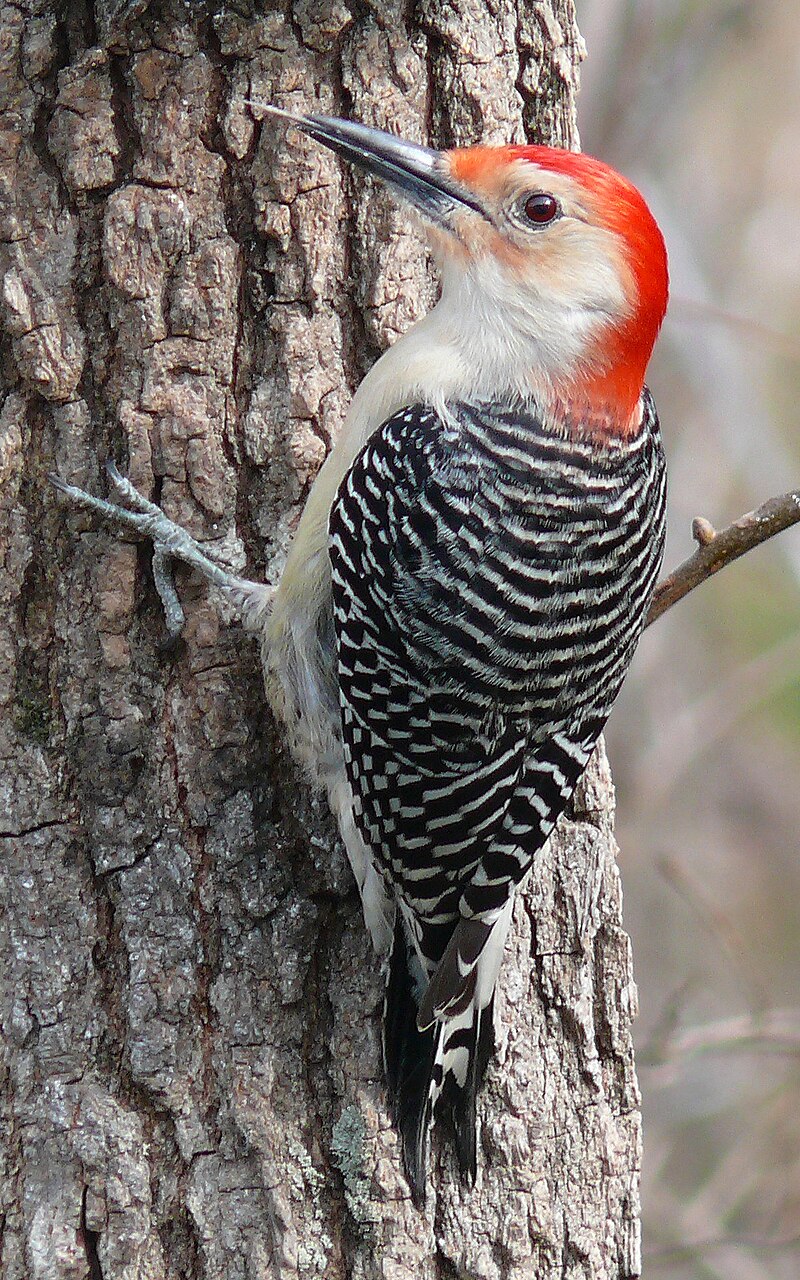Woodpeckers Unleashed: Exploring the Marvels of These Proficient Tree Climbers
Woodpeckers, with their distinctive markings and balanced drumming echoing via wooded areas, hold an unique area in the avian globe. Their specialized anatomy and adjustments enable them to browse vertical surface areas with unrivaled skill. Their proficiency of tree climbing is just one aspect of their remarkable actions. As we delve right into the complex information of woodpeckers' nesting behaviors, feeding methods, and the recurring preservation initiatives to shield these impressive birds, a much deeper gratitude for their area in nature unfolds.
Makeup and Adaptations
When checking out the makeup and adjustments of woodpeckers, one can observe exceptional functions that enable these birds to grow in their specialized eco-friendly particular niche. Additionally, woodpeckers have zygodactyl feet, with two toes encountering onward and 2 encountering in reverse, offering a company hold on tree trunks while they browse for food or drum for communication.
Moreover, woodpeckers have a special tongue framework that is long, barbed, and sticky, allowing them to extract bugs from crevices in timber. This customized adaptation allows woodpeckers to manipulate a food source that is hard to reach to lots of other bird varieties. Generally, the anatomy and adjustments of woodpeckers showcase the remarkable transformative services that have actually enabled these birds to thrive in their arboreal environment.
Drumming Behavior
Having actually explored the composition and adaptations of woodpeckers, the emphasis now moves to understanding their drumming actions, a distinctive facet of their communication and territorial display screens. Drumming is an important kind of interaction among woodpeckers, serving numerous functions such as developing territories, drawing in mates, and signaling alarm. Each woodpecker varieties has a distinct drumming pattern that aids individuals acknowledge participants of their own types and identify them from competitors or killers.
Woodpeckers generate drumming sounds by quickly pecking on powerful surfaces such as dead trees, utility posts, or also metal items, developing a series of rhythmic beats. The strength and rate of drumming can differ based on the function; for circumstances, a rapid drumming series might symbolize hostility in the direction of intruders, while a slower and softer drumming pattern might show courtship (Woodpeckers in Florida). Additionally, woodpeckers may change the regularity and period of their drumming to share specific messages efficiently
Nesting Routines
Discovering the nesting habits of woodpeckers reveals interesting understandings right into their reproductive actions and environment selections. Woodpeckers are recognized for their unique nesting preferences, commonly digging deep into dental caries in trees to develop protected spaces for raising their young. These cavities navigate to this site serve not only as a nesting site but also as a secure refuge from predators and inclement weather.
Woodpeckers exhibit a high level of fidelity to their nesting sites, typically returning to the exact same location year after year. This behavior highlights the importance of suitable environment schedule for their reproductive success. The option of a nesting website is vital for woodpeckers, with aspects such as tree types, height, and decay phase playing considerable functions in their decision-making process.
Surprisingly, some woodpecker varieties are understood to excavate multiple dental caries within their area, offering themselves with alternative nesting alternatives. This approach may serve as a kind of insurance policy versus potential threats or disruptions to their main nesting site.

Feeding Strategies
Woodpeckers employ a range of specialized feeding methods to acquire their primary food sources. One of one of the most distinct feeding behaviors of woodpeckers is drumming, which involves fast pecking on trees to uncover pests below the bark. This drumming not just aids them locate prey yet also functions as a means of communication with other woodpeckers. Woodpeckers have strong, chisel-like beaks that enable them to drill into timber easily. When an opening is developed, they utilize their lengthy, barbed tongues to remove insects such as ants, beetles, larvae, and spiders. These tongues are coated with sticky saliva that helps trap the prey. Woodpeckers are also known to excavate cavities in trees to access hidden insect larvae or sap. Some species, like the acorn woodpecker, store nuts in specially created holes called granaries. This strategic storing of food helps them endure throughout food deficiency durations. Woodpeckers are genuinely exceptional in their feeding methods, showcasing versatility and intelligence in procuring redirected here their nutrition.
Preservation Efforts
Amidst the detailed feeding strategies displayed by woodpeckers, the conservation initiatives intended at protecting these fascinating birds play a critical function in preserving their environments and populations. Woodpeckers face numerous dangers to their survival, including environment loss because of deforestation, environment change modifying their environments, and collisions with synthetic structures such as structures and automobiles - Woodpeckers in Florida. Conservationists are proactively working to resolve these difficulties and ensure the lasting well-being of woodpecker types

Education and public recognition projects are also vital parts of woodpecker conservation initiatives. By increasing awareness about the importance of these birds in keeping healthy woodland ecological communities, guardians can garner assistance for habitat preservation initiatives and advertise responsible land monitoring methods. Via collective efforts between scientists, policymakers, and regional areas, we can work with each other to protect a future where woodpeckers grow in their natural environments.
Conclusion
